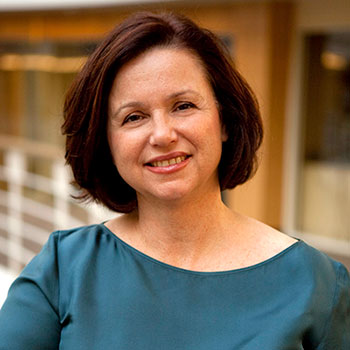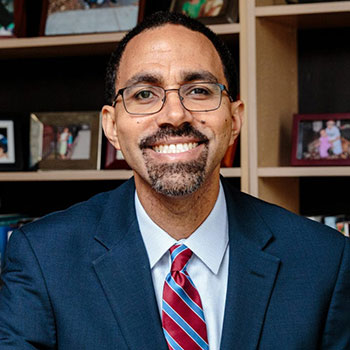What Might District Leaders Be Overlooking in Preparing for the New School Year?
Carnegie Corporation of New York grantees emphasize caring for disconnected students, addressing the digital divide, developing new models, and closing equity gaps
Carnegie Corporation of New York grantees emphasize caring for disconnected students, addressing the digital divide, developing new models, and closing equity gaps

Education leaders are dealing with remarkable challenges and uncertainty around student success during the 2020–21 school year. With so many difficulties generated by the pandemic, there is a real risk of overlooking important issues connected to students’ learning and emotional needs. Four Carnegie Corporation of New York grantees — Bellwether Education Partners, Common Sense, Education Resource Strategies, and The Education Trust — offer their expertise on some of the issues that may be going unnoticed, centering on the question:

There are thousands — perhaps tens of thousands, maybe even hundreds of thousands — of kids who haven’t connected with their schools at all since they closed in March. They left school one afternoon in those chaotic weeks and never logged in or talked to a teacher again. Some of those children are homeless, in contact with the juvenile justice system, or living in unsafe homes. Many of them are Black, Latinx, or Native. Almost all of them are poor. They have not had the daily wellness check that a school provides, and with the academic year beginning again, schools are learning that many students now cannot be found.
Only in our wildest imaginations are those kids skipping school to read books and play outside. The reality is far grimmer than many of us are eager to contemplate: Our most vulnerable young people are likely experiencing adverse childhood experiences like hunger, poverty, abuse, and neglect at rates that we are wholly unprepared to address.
If we don’t develop creative plans with urgency and intentionality to find, protect, and support those students who are hardest to reach, we will have truly lost a generation.
Hailly Korman, Senior Associate Partner, Policy and Evaluation, Bellwether Education Partners
School leaders might be tempted to believe that someone else is taking care of it, but the truth is that the fragmented nature of supportive systems like public agencies, schools, and community-based organizations diffuses the responsibility for keeping kids safe. The effect is that young people are being abandoned by all of the systems that were created to care for them. If we don’t develop creative plans with urgency and intentionality to find, protect, and support those students who are hardest to reach, we will have truly lost a generation.
Resources to Support Special Populations of Students During COVID-19
Bellwether Education Partners is a national nonprofit focused on dramatically changing education and life outcomes for underserved children by helping education organizations accelerate their impact and by working to improve policy and practice.

COVID-19 has laid bare the glaring inequities in our K–12 education system. In our recent research, Closing the Digital Divide in the Age of Distance Learning, we reported that 15–16 million K–12 public school students and 300,000–400,000 K–12 teachers, roughly 10 percent of all public school teachers, live in households without an Internet connection or device adequate for remote learning. District leaders across the country have worked hard to secure devices and Wi-Fi hotspots to ensure that no student is left out of virtual learning this fall but what they may be overlooking is how the digital divide affects teachers too.
District leaders across the country have worked hard to secure devices and Wi-Fi hotspots to ensure that no student is left out of virtual learning this fall but what they may be overlooking is how the digital divide affects teachers too.
Linda Burch, Cofounder and Chief Strategy Officer, Common Sense
In addition to devices and connectivity, the shift to remote learning requires the delivery of high-quality digital learning content as well as robust training and support for teachers and parents, particularly our most underserved families. In April, Common Sense launched Wide Open School, a collection of digital learning content and family support services to help teachers and parents/caregivers work together to keep kids learning and emotionally strong during the pandemic. Our surveys with district leaders, educators, and parents over the past few months have revealed that family engagement is an area where all feel the need to bolster remote learning offerings. Teachers feel the need for training and better tools to engage and communicate with parents in the digital context, and parents are looking for easy-to-use, multilingual “how-to” resources for using technology, managing schedules, and keeping kids on track. Wide Open School provides a free resource that we hope can help districts strengthen family engagement for this school year and beyond.
Closing the Digital Divide in the Age of Distance Learning
Common Sense is the leading nonprofit organization dedicated to helping all kids thrive in a world of media and technology.

It’s essential to create schedules and staffing models to meet the moment — whatever that moment may look like.
As schools move between remote, hybrid, and in-person models, they must meet three goals — provide social-emotional support, accelerate learning, and create significant time for teacher teams to learn new ways of working and plan instruction.
It’s essential to create schedules and staffing models to meet the moment — whatever that moment may look like.
Karen Hawley Miles, President and Chief Executive Officer, Education Resource Strategies
We’ve worked with districts and schools across the country that are proving it is possible to create cohesive school designs (schedules and staffing models) that accomplish these three goals within existing budgets. For example, in one model we show how a school might:
Education Resource Strategies is a national nonprofit that partners with district, school, and state leaders to transform how they use resources (people, time, and money) so that every school prepares every child for tomorrow, no matter their race or income.

As schools reopen this fall — whether in-person or remotely – our education system needs to prioritize educational equity alongside paramount health and safety considerations. The same groups of students — including students of color and students from low-income backgrounds — who were subject to preexisting opportunity gaps in our education system also disproportionately suffered from unfinished instruction during school closures this spring, with potentially lifelong consequences.
The simple question that should be driving our school reopening planning is: What will we do differently this year to not only stop these gaps from widening but to actually narrow them?
John B. King, Jr., President and CEO, The Education Trust
The simple question that should be driving our school reopening planning is: What will we do differently this year to not only stop these gaps from widening but to actually narrow them? As we describe in recent work from The Education Trust and our state offices in New York, California, and Michigan, the answer must include high-quality instruction and meaningful daily interaction between teachers and their students, support to close technology gaps that make remote learning impossible, and adoption of anti-racist policies, from ending the overuse of exclusionary school discipline to rooting out inequity in access to advanced coursework.
2020–21 Equity Guides (co-created with Education Resource Strategies as part of the Alliance for Resource Equity)
10 Questions for Equity Advocates to Ask About Distance Learning
ExtraOrdinary Districts in ExtraOrdinary Times Podcast
The Education Trust is a national nonprofit that works to close opportunity gaps that disproportionately affect students of color and students from low-income families.